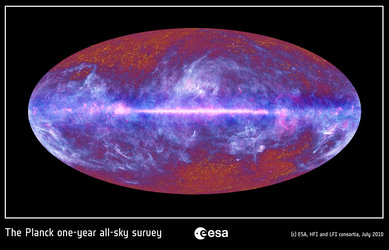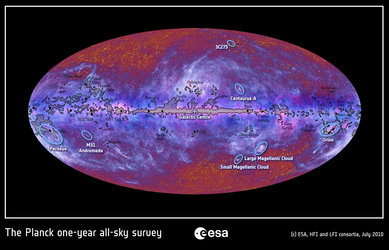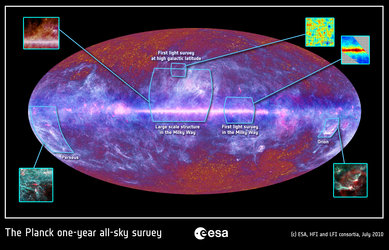Accept all cookies Accept only essential cookies See our Cookie Notice

About ESA
The European Space Agency (ESA) is Europe’s gateway to space. Its mission is to shape the development of Europe’s space capability and ensure that investment in space continues to deliver benefits to the citizens of Europe and the world.
Highlights
ESA - United space in Europe
This is ESA ESA facts Member States & Cooperating States Funding Director General Top management For Member State Delegations European vision European Space Policy ESA & EU Space Councils Responsibility & Sustainability Annual Report Calendar of meetings Corporate newsEstablishments & sites
ESA Headquarters ESA ESTEC ESA ESOC ESA ESRIN ESA EAC ESA ESAC Europe's Spaceport ESA ESEC ESA ECSAT Brussels Office Washington OfficeWorking with ESA
Business with ESA ESA Commercialisation Gateway Law at ESA Careers Cyber resilience at ESA IT at ESA Newsroom Partnerships Merchandising Licence Education Open Space Innovation Platform Integrity and Reporting Administrative Tribunal Health and SafetyMore about ESA
History ESA Historical Archives Exhibitions Publications Art & Culture ESA Merchandise Kids Diversity ESA Brand Centre ESA ChampionsLatest
Space in Member States
Find out more about space activities in our 23 Member States, and understand how ESA works together with their national agencies, institutions and organisations.
Science & Exploration
Exploring our Solar System and unlocking the secrets of the Universe
Go to topicAstronauts
Missions
Juice Euclid Webb Solar Orbiter BepiColombo Gaia ExoMars Cheops Exoplanet missions More missionsActivities
International Space Station Orion service module Gateway Concordia Caves & Pangaea BenefitsLatest
Space Safety
Protecting life and infrastructure on Earth and in orbit
Go to topicAsteroids
Asteroids and Planetary Defence Asteroid danger explained Flyeye telescope: asteroid detection Hera mission: asteroid deflection Near-Earth Object Coordination CentreSpace junk
About space debris Space debris by the numbers Space Environment Report In space refuelling, refurbishing and removingSafety from space
Clean Space ecodesign Zero Debris Technologies Space for Earth Supporting Sustainable DevelopmentLatest
Applications
Using space to benefit citizens and meet future challenges on Earth
Go to topicObserving the Earth
Observing the Earth Future EO Copernicus Meteorology Space for our climate Satellite missionsCommercialisation
ESA Commercialisation Gateway Open Space Innovation Platform Business Incubation ESA Space SolutionsLatest
Enabling & Support
Making space accessible and developing the technologies for the future
Go to topicBuilding missions
Space Engineering and Technology Test centre Laboratories Concurrent Design Facility Preparing for the future Shaping the Future Discovery and Preparation Advanced Concepts TeamSpace transportation
Space Transportation Ariane Vega Space Rider Future space transportation Boost! Europe's Spaceport Launches from Europe's Spaceport from 2012Latest

The spider in the loop
Thank you for liking
You have already liked this page, you can only like it once!
This multicoloured swirl of yellow and blue shows a prominent ring of gas near the North Celestial Pole. The pole appears to be fixed in place, while the rest of the night sky slowly circles around it because of Earth’s rotation. This image comes courtesy of ESA’s Planck satellite, which spent years mapping the entire sky in exquisite detail between 2009 and 2013.
The North Celestial Loop lies over 325 light-years away from us towards the constellation of Ursa Major (The Great Bear). It is composed of dust and neutral hydrogen blown and sculpted into an expanding shell. This can happen in a number of ways: when a dying star explodes as a supernova, by the strong winds streaming into space from nearby stars, or even when fast-moving clouds near the edges of the Milky Way fall inwards and shunt material towards the centre of our Galaxy.
Rather than being a neat, distinct loop, this disorderly feature comprises numerous filaments that knit together, forming small clouds that are connected via coarse arches of material. One such cloud – dubbed a cirrus cloud because it reminds us of the thin, wispy cirrus clouds familiar on Earth – can be seen sitting at the centre of the frame, with tendrils extending from a central point. This feature has been nicknamed ‘the Spider’.
The Loop is expanding and pushing through its surroundings at 15–20 km/s. It contains a mass of neutral hydrogen roughly equivalent to the mass of 1500 Suns. Recent studies of its expansion have puzzled astronomers. They expect neutral hydrogen loops to expand in a spherical manner, but this loop appears instead to be expanding in a cylindrical manner, with the cylinder pointing almost directly towards us, hence its ring-like appearance.
This image is not a traditional view of the Loop; it has a pattern reminiscent of the relief lines of a map spread across the frame, resembling small eddies of swirling water in a stream. These lines represent the orientation of the Milky Way’s magnetic field, while the colours indicate the strength of emission from cosmic dust at each location. Dust grains in and around the Milky Way align themselves along the field lines emanating from our Galaxy into space, and thus their emission is also aligned. This polarised dust emission was detected by the Planck satellite.
The emission from dust is computed from a combination of Planck observations at 353, 545 and 857 GHz, whereas the direction of the magnetic field is based on Planck polarisation data at 353 GHz.
-
CREDIT
ESA and the Planck Collaboration -
LICENCE
ESA Standard Licence

The microwave sky as seen by Planck

The microwave sky as seen by Planck

The microwave sky as seen by Planck with objects labeled

The microwave sky as seen by Planck with objects labeled















 Germany
Germany
 Austria
Austria
 Belgium
Belgium
 Denmark
Denmark
 Spain
Spain
 Estonia
Estonia
 Finland
Finland
 France
France
 Greece
Greece
 Hungary
Hungary
 Ireland
Ireland
 Italy
Italy
 Luxembourg
Luxembourg
 Norway
Norway
 The Netherlands
The Netherlands
 Poland
Poland
 Portugal
Portugal
 Czechia
Czechia
 Romania
Romania
 United Kingdom
United Kingdom
 Slovenia
Slovenia
 Sweden
Sweden
 Switzerland
Switzerland
























